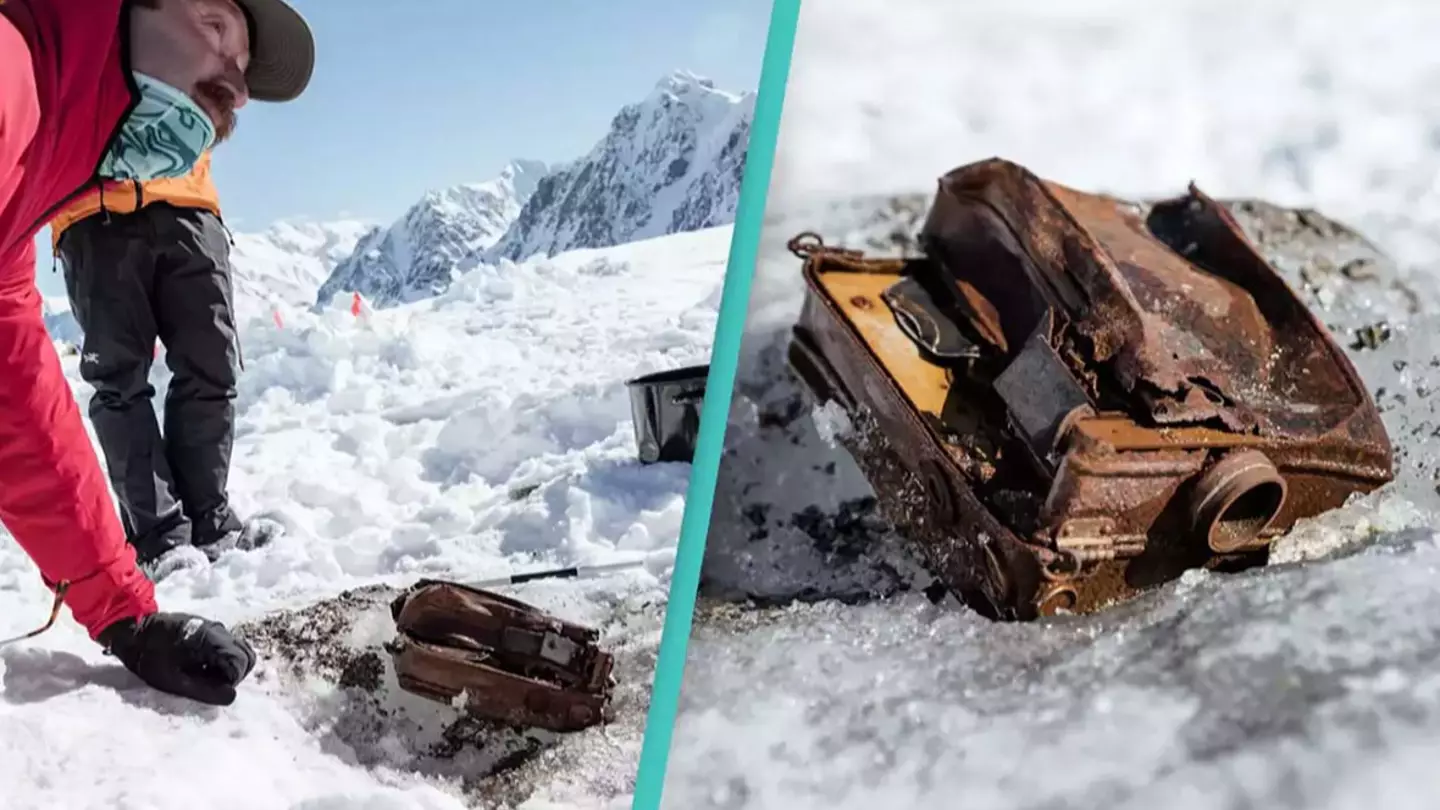
A Yukon explorer's cameras from the 1930s has been recovered and the images are fascinating.
American explorer Bradford Washburn took on the third-highest mountain in Canada - Mount Lucania in Yukon, Canada - in 1937.
Joined by friend Bob Bates and armed with several cameras - Washburn well known for his documented research and mountaineering - the pair successfully made it up the mountain, but it was on their descent where they came into difficulty.
Advert
When it became too dangerous for a pilot to pick the pair up as a result of poor weather conditions, Washburn was forced to abandon much of his equipment - including his cameras - on Walsh glacier.
And as we all should know either from our old geography lessons, or from something Greta Thunberg's said, glaciers move.
.png)
So, there wasn't much point Washburn noting down where he'd left his cameras in the hopes of ever returning to retrieve it.
Advert
Well, until last year that is. Despite the cameras having lain buried in the ice since 1937, Teton Gravity Research (TGR) joined forces with professional mountain explorer Griffin Post and glaciologist Dorota Medrzycka to locate the cameras - the device holding important research surrounding how the mountains have changed over the last 80 plus years.
The explorers nearly missed out on the cameras as Post revealed to People - not finding it on their first trip out to the mountain.
Medrzycka told ABC News: "I was not only disappointed, but I pretty much knew that I was letting everybody down.
"Because technically, I was the one that was supposed to have the knowledge to figure out where it was. So I definitely felt like I had failed everyone, and that responsibility was pretty, pretty hard to bear."
Advert
READ MORE
TERRIFYING VIDEO SHOWS WHAT IT WOULD BE LIKE FALLING FROM TALLEST BUILDING IN WORLD
HARROWING FOOTAGE OF CAVER MISSING AIR POCKET IS HARD FOR PEOPLE TO WATCH
However, Medrzycka came up with a new theory to find the equipment, looking at the field and seeing a line of debris known as a medial moraine that looked like it had broken.
Advert
To back up the claims, she looked at a satellite image and could see two places where it had happened.
According to the glaciologists, the Walsh glacier had surged twice since the 1930s, with Medrzycka theorising that the breaks in the moraine happened during a surge.
This allowed her to calculate how far the glaciers moved and identify where the cameras were.
.png)
The team decided to put the theory to the test and went out a second time, finally discovering the cameras just one hour before the helicopter was scheduled to pick them up.
Advert
Post said: "That moment when we saw the equipment that was indisputably theirs [was] just so surreal and validating in so many senses. There was so much self-doubt over the last 18 months."
While Washburn's Fairchild F-8 aerial camera had broken into several pieces, two motion pictures cameras were also discovered - films still inside.
Medrzycka said: "When we did find it, man, that was priceless."
Post explains the recovered photographs revealed 'maybe 100 or 200 vertical feet of ice has essentially disappeared' proving just how rapidly climate change is occurring.
Sorry to end on a bit of a downer.
Topics: World News, Environment, Photography, Canada, Weather